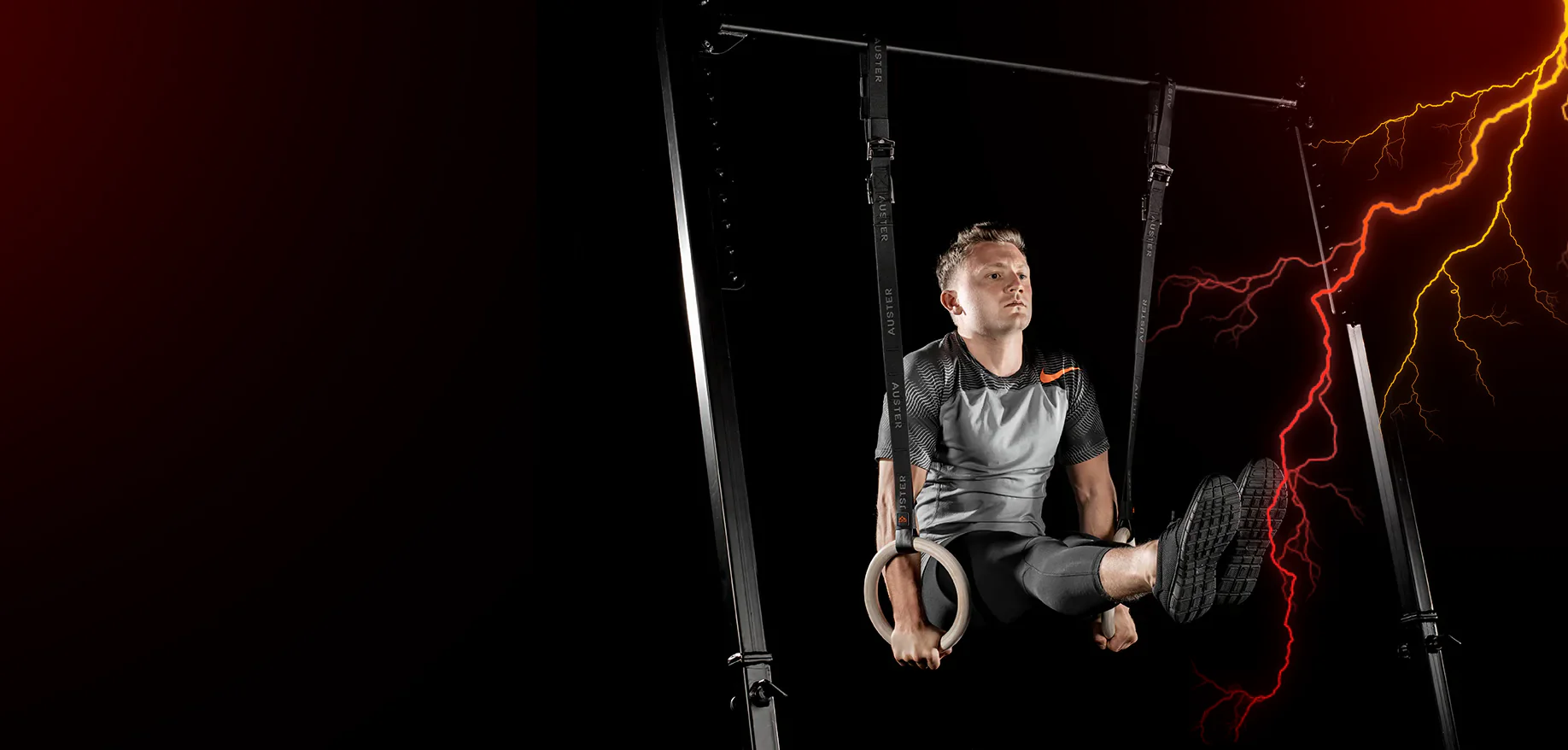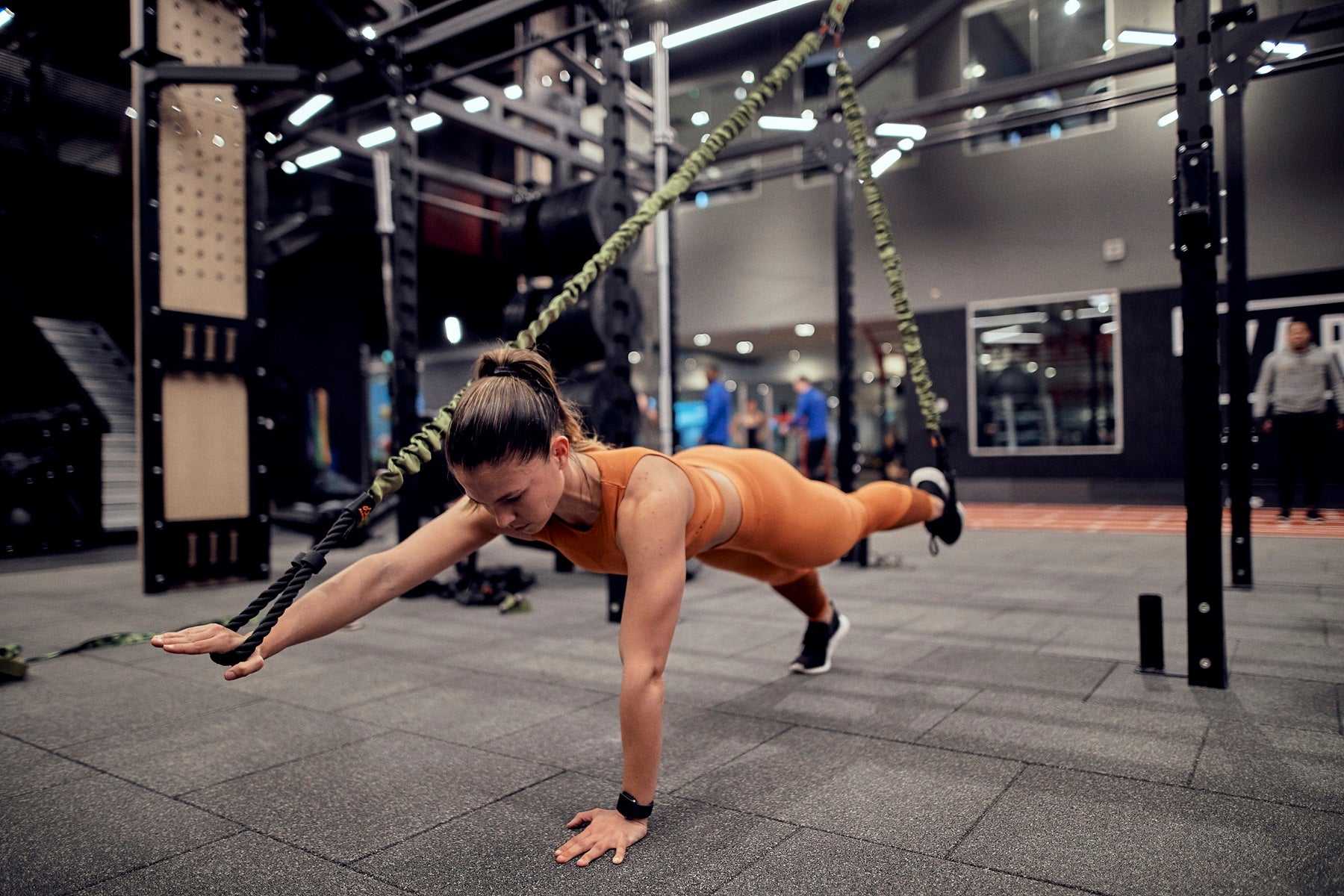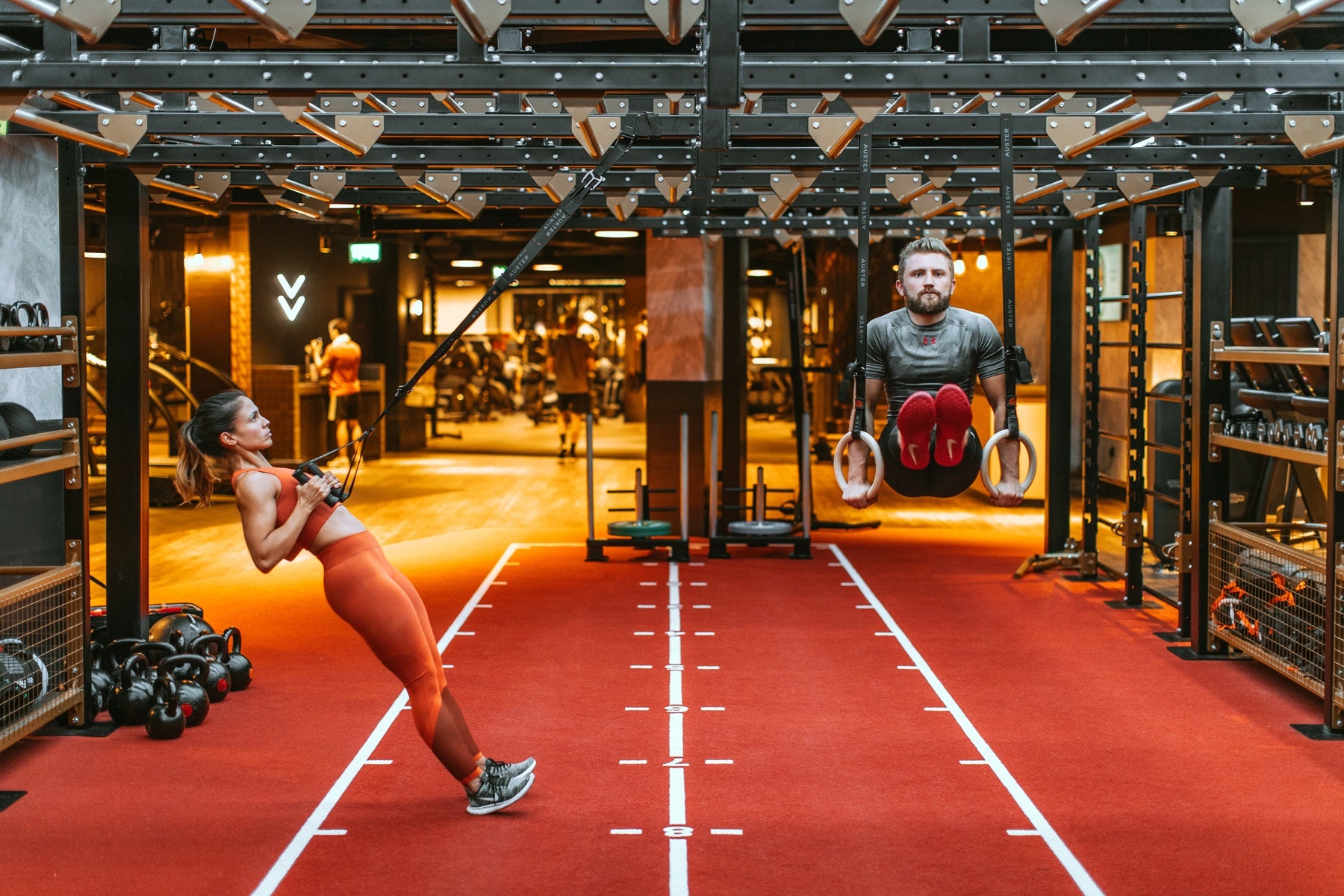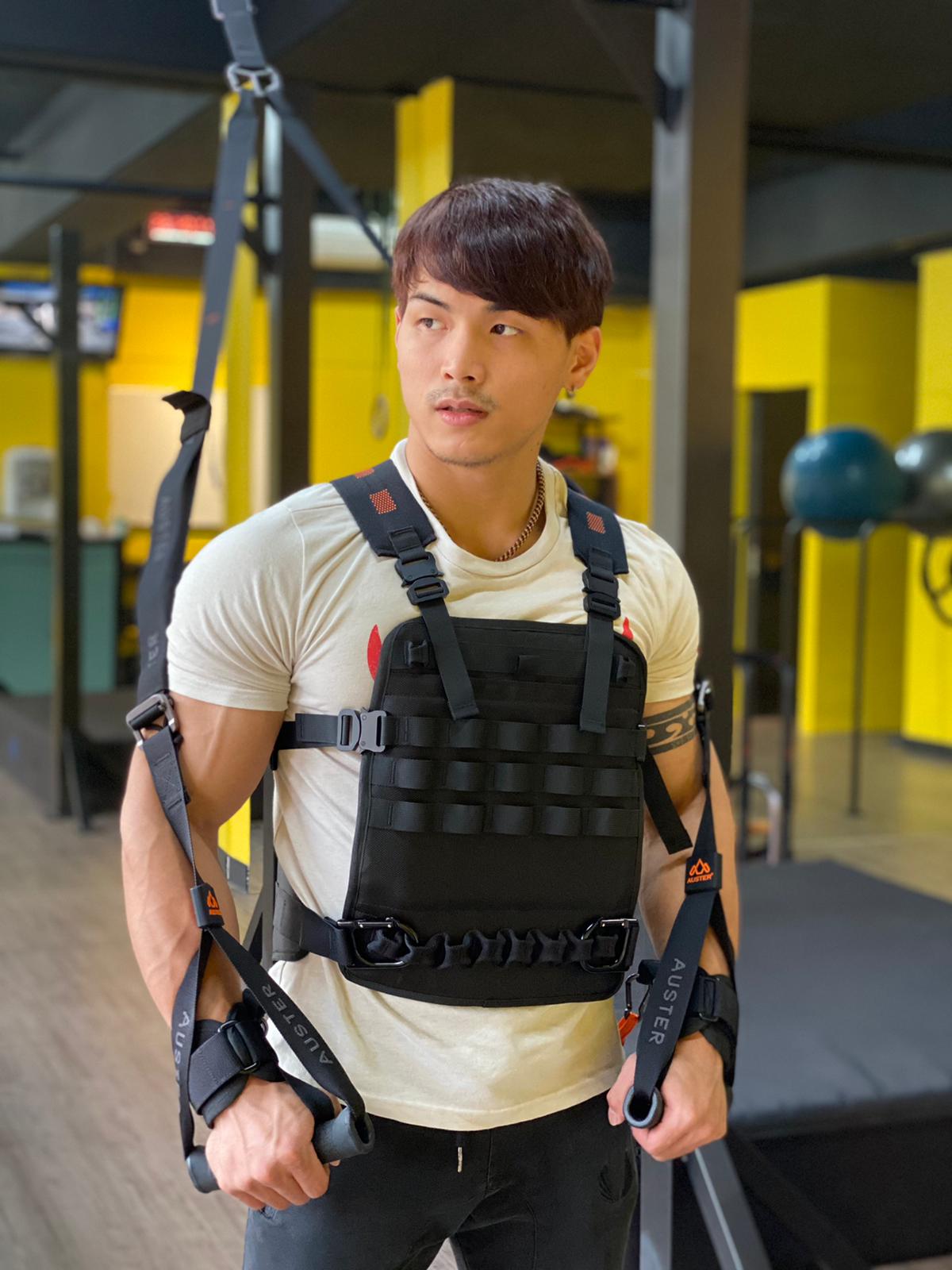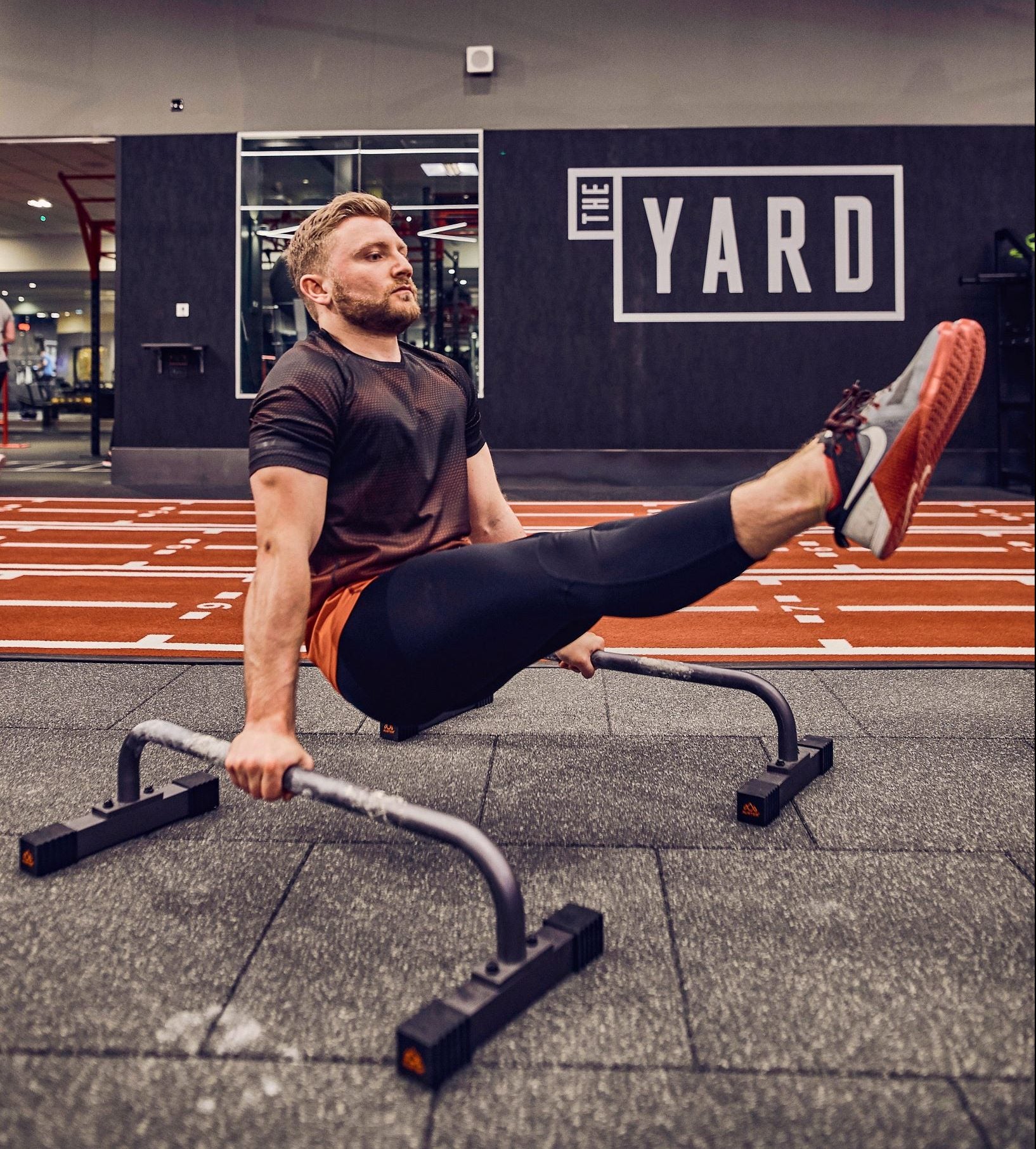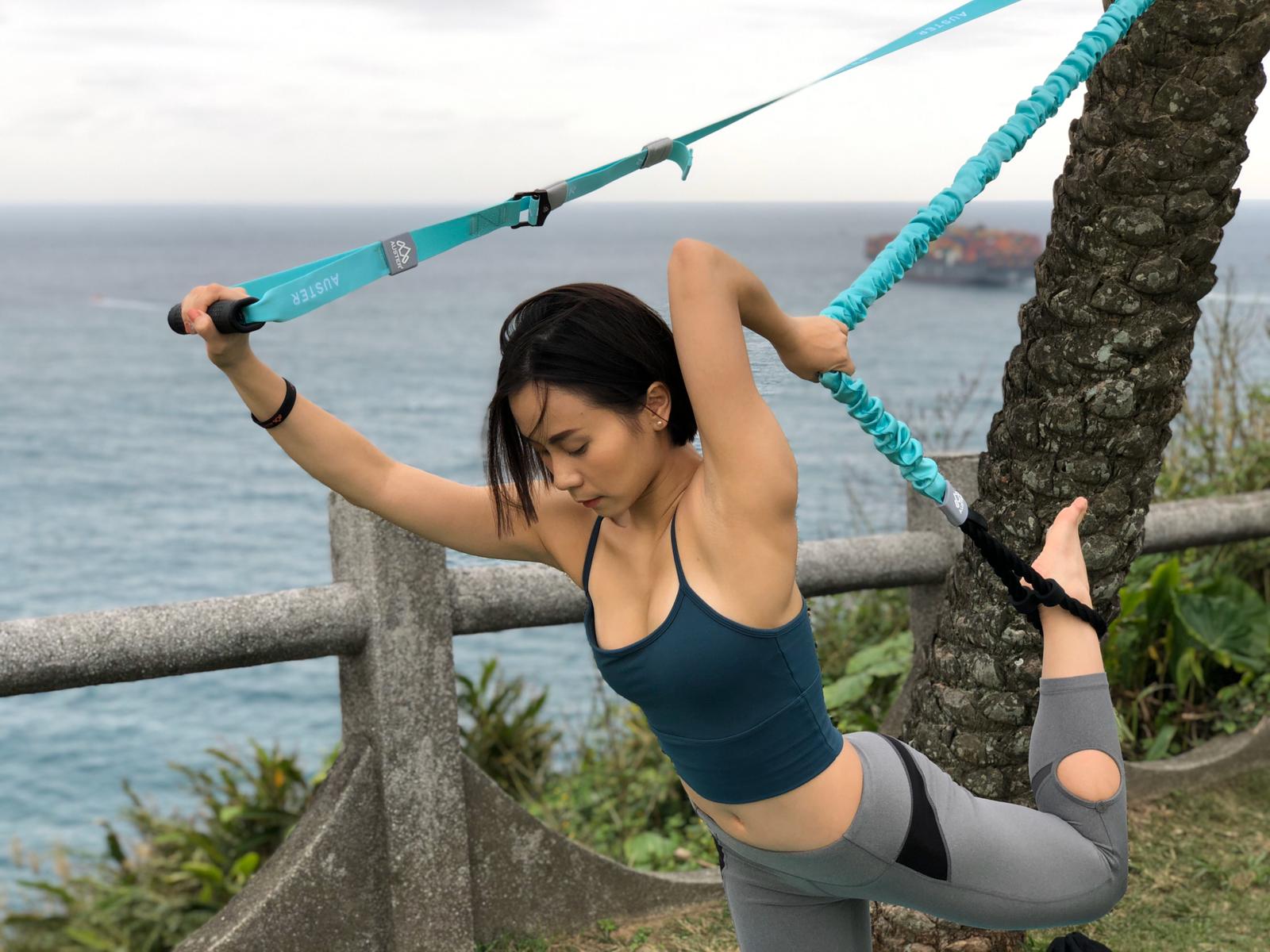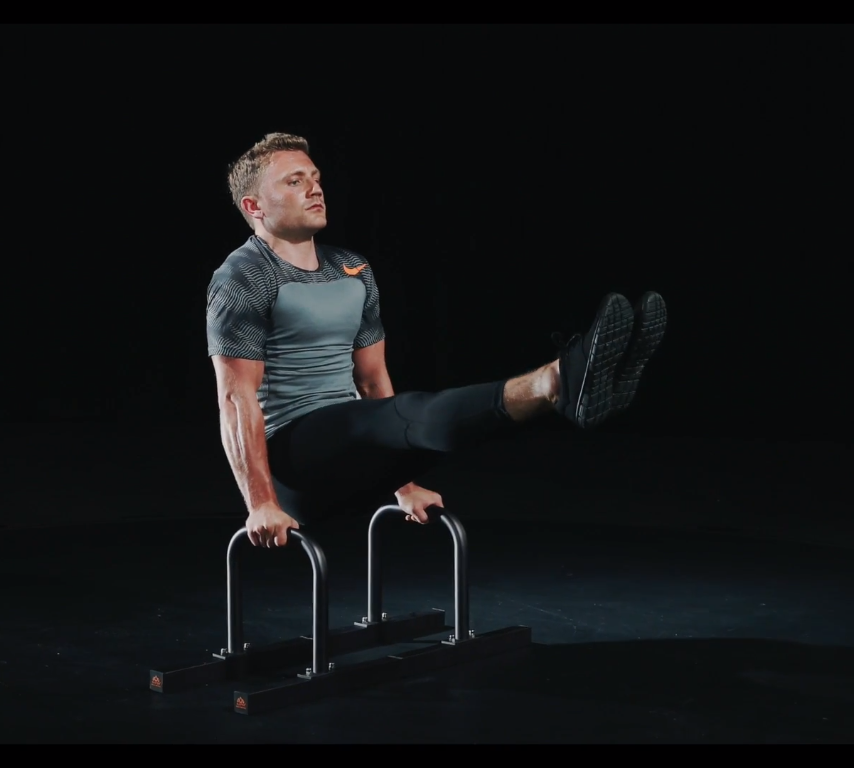
5 Beginner Parallette Exercises
Parallettes, or parallel bars, are a fantastic piece of kit; whether you are a beginner or a seasoned calisthenic pro. Parallettes typically come in three heights, Low, Medium and High. The Low bars are best suited for press-up exercises, the Medium for L-sits and the High bars makes it easy to do Dips and Rows. The lower the bars are to the ground, the harder it is to perform dynamic movements where your legs swing between your arms, as there is less space and requires increased flexibility. This means that typically more advanced bodyweight athletes use very low bars, as they have superior flexibility, technique and strength.
There are more exercise options when using High Bars, as you can get underneath the bars and do rows and hangs – however they take up more space, can be more costly and doing handstands on a high bar can be a lot scarier than those just a few inches off the floor. Make sure to buy a quality set of Parallettes, as the more trust you have in the bars, the less you need to worry about the equipment breaking, and the more you can focus on your technique and exercise execution.
Beginners often struggle with what to do, how to do it, and how to improve. The free AusterFit app can be used alongside your workout to show you how to perform each exercise.
Here are our favourite five Parallette exercises for beginners.
Archer Push ups
These are an excellent variation of regular push ups, with increased difficulty compared to regular push ups. By taking the weight with one arm at a time you are working your pressing strength and stability. Try and work to having the non-working arm straight and locked when your chest is close to the floor. Use these to work up to single arm press ups.
L-Sit + L-Sit to Tuck
The L-Sit is a quintessential gymnastic static hold for the Abdominals. Once you can comfortable hold the L-Sit, with toes pointed, legs completely straight then you can progress to the L-Sit to Tuck.
The Tuck is a great exercise for progressing shoulder strength for handstand push ups and working towards the planche. Keep the scapula protracted (pushed forward) and hold for as long as you can. Progress to holding your legs as close to your chest as possible.
L-Sit to Tuck is a dynamic variation, combining both the above elements, to increase abdominal activation and shoulder strength and stability.
Hindu Push up
The Hindu Push up works the chest, shoulders, arms and back. It is a progression exercise to take you to shoulder press ups and handstand press ups. A dynamic movement that is highly functional and fun. Ensure to keep your elbows tucked by your side, rather than flared outwards.
Swing
The swing is a functional dynamic movement to help shoulder stability and work accessory muscles like the abdominals, arms and back. It may not look hard, but try this for 30 controlled reps and you’ll soon feel the burn.
Skullcrushers
If you don’t think you can get big arms doing bodyweight exercises, then try skullcrushers. A pure tricep isolation exercise that will seriously pump up your arms.

